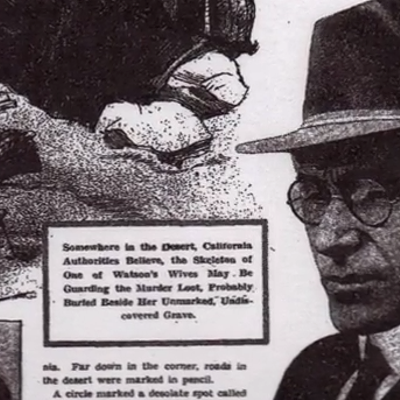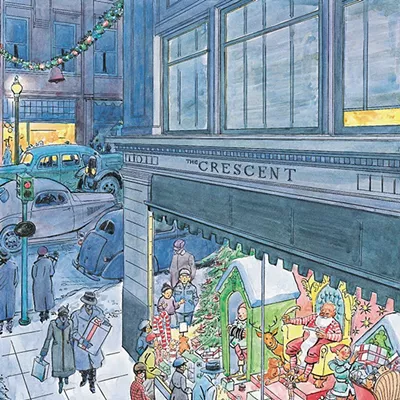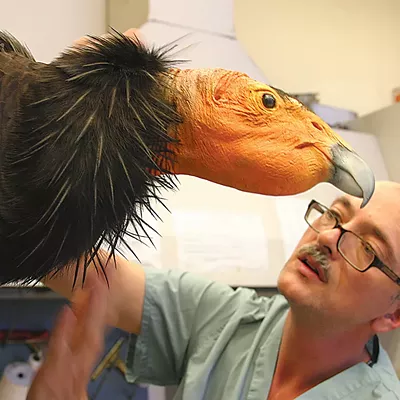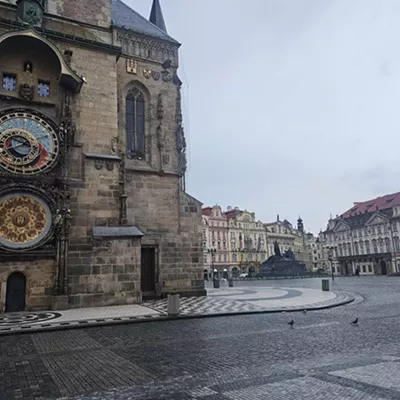Long before any rumblings of global warming surfaced, winter thaws gladdened the hearts of frozen residents of the Inland Northwest, and early fur trade journals record wild swings in temperature that would reduce a firm base of winter snow to an impossible glush within two day's time. Such periods of warm weather bring out oddly familiar phenomena of their own, natural occurrences that are easily forgotten from year to year. Two centuries ago, North West Company agent David Thompson puzzled over one of them long enough to tie his mind in knots.
"As the snow begins occasionally to thaw, myriads of small black insects make their appearance," Thompson wrote in his classic Travels across Western North America 1784-1812, "so numerous, that the surface of the snow is black with them. They are about one twentieth of an inch in length of a compact make. They cover the sides of Lakes, and Rivers, snow shoe paths, and other places. They come with the first thawing of the snow, and disappear with the snow."
In describing the wonders of what modern school kids call snow fleas, Thompson was spot on in his observations: These odd insects, that appear magically in tire ruts or deer tracks when the snow begins to melt, do seem to be both impossibly numerous and impossibly small. Most measure between one and two millimeters, which is very close to Thompson's guess of one-twentieth of an inch.
The black spots on soft snow are actually springtails, an ancient family of insects renowned for their leaping ability. Their history stretches back to some of the earliest arthropod and insect fossils, preserved in stone during the Devonian Period, almost 400 million years ago. Their range is even more impressive, as they are one of the few life forms found on all the continents, including Antarctica. Springtails are tough little bugs.
While real fleas leap with their powerful legs, each springtail comes equipped with a pair of stiff tail-like appendages called furcula that fold inward and fasten beneath the stomach via a pair of ingenious hooks. When an insect releases those hooks, the twin springs catapult it into the air. You can only see these furcula if you can capture a springtail, immobilize it (clear antibacterial soap works nicely) and slide the creature under the kind of microscope found in any high school biology class. Under magnification, you can trace the swollen bulb of a snow flea's thorax, the compass rose of its six legs, and the graceful right-angle arc of antenna that are longer than any of the limbs. Most of our snow fleas are dark blue, which is what makes them stand out black against the snow. But close up, each carries a mandala pattern more complex than the finest Afghan rug, and many shine with green and orange shades that stretch our usual definitions of blue.
No one needs a microscope to try to watch these tiny beasts behave. Once you notice some of the black spots sprinkled on the snow, look for open spaces around nearby trees and you'll usually find more. If you spread your hands out just above them, the peppery flecks will begin to disappear from the white snow and reappear on your skin. If you flinch in the least little bit, they will disappear again, launched by their furcula and scattered to the wind.
David Thompson was not the kind of guy who quit thinking just because he could shake the pepper from his hand. "The question is," he continued in his Travels, "from whence are these myriads of insects which are seen on the snow? They cannot come from the ground and penetrate three feet of hard snow. They are never found below the surface of the snow. How do they live, upon what do they live?"
The answer to those questions has taken scientists a long time to figure out, but they are on the path. Snow fleas find their nourishment in molds and fungi on the ground, and the springtails are certainly present in our world year around -- it's just that they are too tiny to find by sorting through the duff of a forest floor. Some researchers believe that the reason so many springtails can appear so quickly in one place is due to mass migrations -- perhaps when a group of springtails has simply exhausted the fresh resources of one area and needs to catapult together to greener pastures.
One aspect of snow flea life that has long intrigued researchers is their ability to remain active in very cold weather. A few years ago, biochemist Dr. Peter Davies of Queens College in Toronto was cross-country skiing when he noticed some snow fleas and brought them back to the lab. With the help of Dr. Laurie Graham, he isolated the antifreeze-like protein that allows these springtails to operate during a winter in the north country.
The new protein proved to be rich in an amino acid called glycine, which in purified form prevents dangerous ice crystals from forming in a springtail's system. Davies and Graham are working to apply this same chemistry to the preservation of human donor organs -- if a heart's transportation temperature can be lowered by a few degrees, its shelf life might be significantly increased.
But to any naturalist out snowshoeing who happens onto an outbreak of snow fleas, the first question that leaps to mind involves food: What creatures are taking advantage of this sudden resource?
The snow scorpionfly is an odd, horse-faced insect that at 3-5 millimeters in length is more than twice as large as a snow flea; these scorpionflies sometimes gather on the snow in clumps that seem as numerous as the springtails. Since many related scorpionflies prey on other insects, it has long been assumed that springtails form a major part of the diet of snow scorpionflies. But the latest research seems to indicate that snow scorpionflies, like the snow fleas, live on molds and funguses and may have simply been inspired to make a mass migration.
Vermont entomologist Bert Heinrich started following snow fleas around because some Europeans suggested that the springtails would make perfect meals for ruby- and golden-crowned kinglets, the tiniest of our winter birds. Heinrich, one of the most dogged observers working today, found no evidence that kinglets leave their trees to peck springtails out of the snow, but he did see gray jays scooping dense patches of snow fleas up like snow cones. Where food exists, something is there to eat it.
Jack Nisbet is an author, historian and naturalist who lives in Spokane.


















